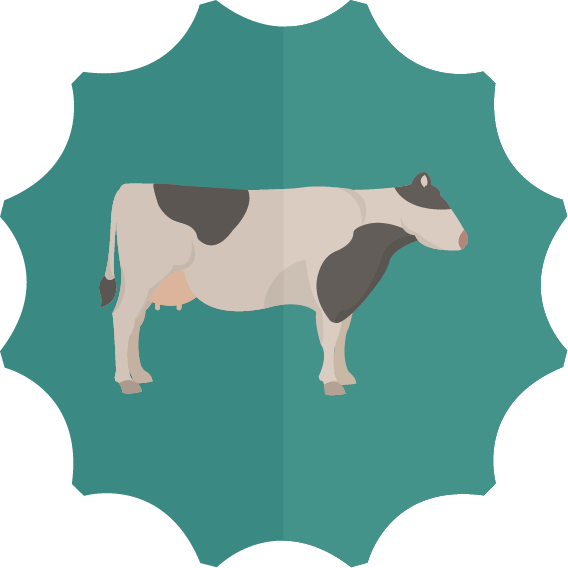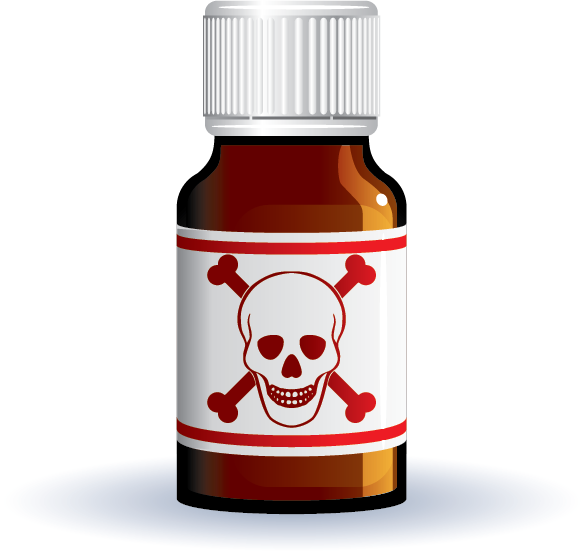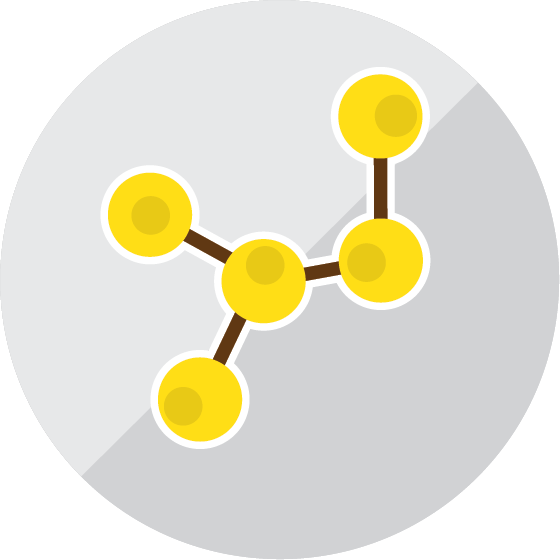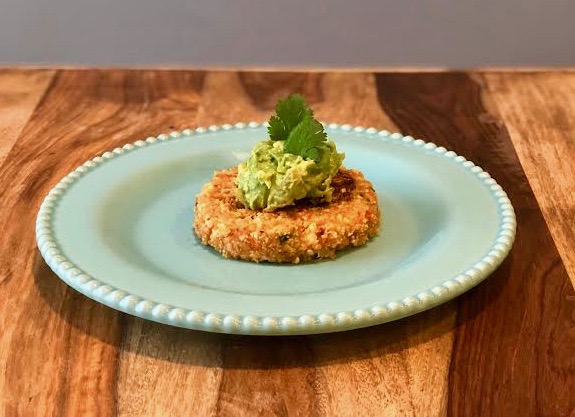The 4 Reasons You Should Stop Eating All That Dairy
By Nicole Martin
January 19, 2017

Dairy is everywhere.
Literally everywhere.
Americans on average eat around 630 pounds of dairy each year—whether it be in the form of milk, yogurt, ice cream, cheese, etc. And speaking of cheese… within that number, cheese accounts for a full 31 pounds all by itself.
That is a lot of cheese.
Here some other things that weigh around thirty pounds to put this into perspective:
- 2,400 earthworms.
- 3 human heads.
- A cinder block.
- A three year old child.
Again: That is a lot of cheese per person.
So, okay, maybe I’m belaboring the point here. But it’s important to understand just how integral milk and cheese and other dairy products are within the Standard American Diet (SAD)… and what’s it doing to our bodies.
It’s such a standard ingredient (especially when you’re talking processed food) that trying to give it up for good isn’t nearly as easy as it seems.
Here’s just a short list of surprising places where you might find dairy:
- Baking mixes
- Baby Formula (which, by the way, is NOT good)
- Breath Mints
- Chewing Gum
- Coffee Creamers
- Prescription drugs (a whopping 20% contain dairy!)
- Faux-Meat Soy Products (like Not-Dogs, etc.)
- Artificial Sweeteners
And honestly, that’s just the beginning.
So, without continuing to beat around the bush (which probably also contains dairy), here’s the long and short of it.
Dairy products are bad for you.
And, what’s more, they’re bad for you in a lot of ways.
Here are four reasons why you should give up dairy for good:

Not How We’re Made
Think about what milk actually is.
It’s a substance made in the body of a female mammal. It’s sole purpose is to turn little baby mammals into bigger kid mammals.
And after that stage is accomplished, no more milk. None. Mammals wean their young off the milk after a while, which kinda ticks off the young for a bit, sure, but also forces them to start eating like the adult animal they will become. So, cow’s milk is for baby cows. Goat’s milk is for baby goats. Mouse milk is for baby… well, you get it. Plus, take a look at that last sentence. Notice the repetition. Not only do other mammals only drink their mother’s milk for the first stage of their life, they also ONLY drink milk from their own species. This is profound in a way I can’t even express. We—us humans, I mean—are the only species on earth that consumes the milk of other animals. And while that’s not exactly a knock-punch of an argument—we’re also the only species to fly planes, get in land wars, and write novels—it’s at least a cause for concern. The point is this: When you look across the world, its biological systems, and how nature seems to just work, our consuming milk from another animal and for the duration of our lives is, essentially, unnatural.

Most of Us Can’t Handle it Anyway
75% of the world population suffers some degree of lactose intolerance. That should tell us something. Instead of saying someone is “lactose intolerant” as if it’s a defect in their body, it’s actually a lot more reasonable to say that the other quarter of the population is the real aberration.
(Fun fact: Scientists now think that the reason a quarter of the population is not lactose-intolerant is because of genetic adaptations that took place in northern European dairy farmers a few centuries back. Those genes continue to exist in their descendants. All of which makes sense: If your population is trying to stay alive and most of what you have available to eat comes from cows, then the genetic population is going to steer heavily towards those with the genes that allow for dairy to be consumed without system-wide failure.)
This is all strong evidence for the idea that we should not be consuming dairy. Put simply, it’s pretty obvious that milk doesn’t do our system much good.
But it’s not just the fact that it doesn’t do us any good. It’s also that dairy products do a great job messing up our internal systems.
For example…
Want more great nutritional goodness? Sure you do! Download our free step-by-step guide to getting healthy… and staying that way! Click here to grab your copy of The 7 Habits of Highly Healthful People NOW

D-galactose
Here are a few facts about our friend D-galactose here:
D-galactose is is a monosaccharide sugar that is less sweet than glucose and fructose.
D-galactose is found in all dairy products (although in smaller amounts in fermented dairy products like yogurt and sour cream.)
When scientists are running experiments on mice and want to drastically age them prematurely, cause their systems to run rampant with inflammation, damage their neuroplasticity, and—in general—just mess them up, what’s the go-to substance to accomplish all this? Answer: D-galactose.
And what’s even more terrifying is that the volume given to these mice to get the wrecking job done is the equivalent (meaning, if they were the same size as us) is just two glasses of milk.
Two. Glasses.
If that doesn’t scare you away from that carton of Breyer’s in the freezer, I don’t know what will.

Bad to for the Bone(s)
But, okay, sure. There are some bad things about milk. But nobody’s perfect, right? Shouldn’t the benefits of dairy outweigh the detrimental stuff?
Actually, no.
Primarily because there are no health benefits of consuming dairy that you couldn’t get (often in more easily digestible forms) from a plant-based diet.
For example, for years and years (and years) our doctors have been telling us to drink milk because it’s good for our bones.
Which is to say: For years and years (and years) our doctors have been either inadvertently giving us terrible advice, or outright lying.
The data now shows that not only are milk and other dairy products not GOOD for our bones, they’re actually actively BAD for them.
First off, the type of calcium found in cows’ milk isn’t the kind that can penetrate our bones in the first place. Which means that it’s not providing building material for the bones at all.
Secondly, the calcium that our body does take in from dairy actually makes our bones weaker.
Here’s how it works. When you consume dairy (or any animal by-product for that matter) the proteins acidify the body’s pH. To regain balance, the body needs to neutralize the acids. The best way to do this is by increasing the calcium in your system. And where’s most of your calcium stored? In the bones.
The calcium comes out of the bones, weakening them, and then gets flushed out through the digestive system. You now have less calcium in your body—simply because you consumed what doctors have been telling you your whole life is the best source of calcium!
So if calcium from milk isn’t cutting it, where should you get your calcium?
Good question.
Here’s a short list of just some of the foods that can easily help you get your calcium:
- Kale (90 mg per serving)
- Sesame seeds (280 mg per ounce)
- Almonds (80 mg per ounce)
- White Beans (100 mg per half cup)
- Figs (Dried, 27 mg each)
- Turnip Greens (200 mg per cup)
- Arugula (125 mg per cup)
- Broccoli (180 mg per cup)
- Sunflower Seeds (50 mg per ounce)

So, What Now?
Giving up dairy for good would be a..well… good thing to do for yourself.
But it’s also a daunting task. I know from personal experience. Even after going full vegan years ago, I’m still a recovering cheese addict. So, don’t take anything laid out in the article as judgement. In fact, a lot of the data on what dairy products actually do to your body is relatively new. Try a google search on “health benefits of dairy” and you’ll still see a lot of information being presented that we know now simply isn’t true. A lot of doctors don’t even know this information. We are all marketed by the dairy industry.
So, no judgement. I get it. The very idea of getting out the trashcan and rooting through the fridge for any and all foodstuffs that contain dairy is not a light-hearted proposition.
Fortunately, there are a lot of healthy substitutes for milk these days. Almond, Soy, Rice, and Hemp milks are pretty standard fair even at the smaller grocery stores across the country. Nut cheeses are very good. There’s even dairy-free ice cream available from a number of brands, all of which are super tasty.
And to be honest, the best way to start is to start slow. Find something you can replace and replace it. Then do that again a few days or weeks later. Then just repeat the cycle until you are off the moo-juice entirely (and feeling a ton better because of it).
If you’re interested in taking that step but don’t think you can do it alone, I would encourage you to register for our Wellness Training Institute Dinner. It’s free, we have a couple every month, and it’s a great way to eat a healthy meal with us and learn about how to make this stage of life the best one yet!
You can learn more here.







